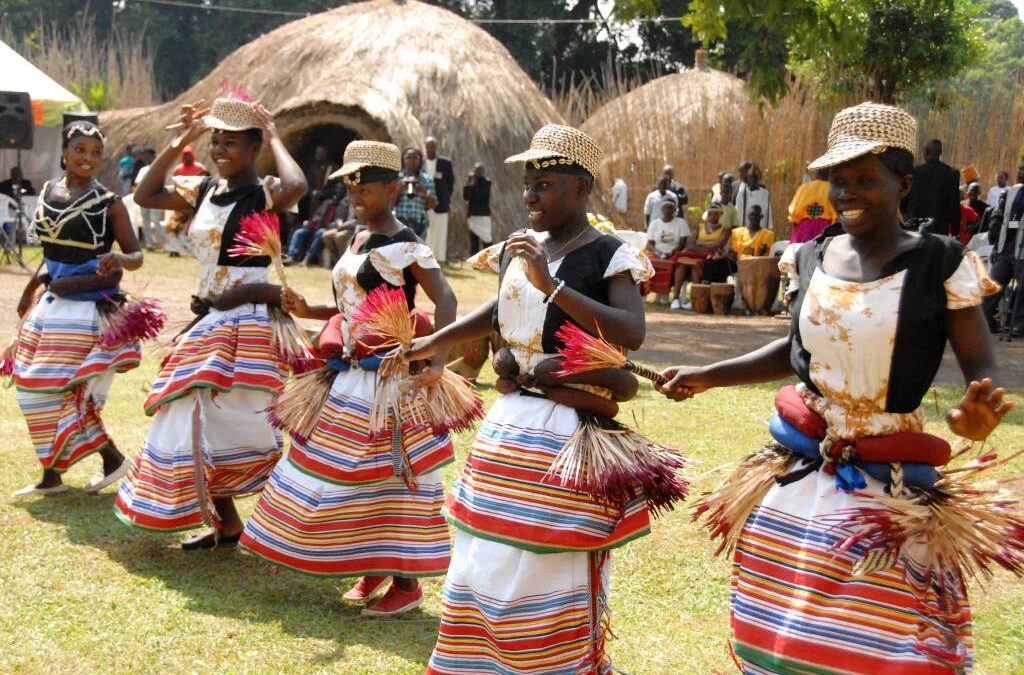Bunyoro Kitara Kingdom & Culture

Rushaga Gorilla Safaris & Tours
November 10, 2023
Rushaga Region of Bwindi Impenetrable National Park
November 12, 2023Bunyoro Kitara Kingdom & Culture: Embracing History and Traditions
Discovering the Essence of Bunyoro Kingdom
Nestled in the western part of Uganda, Bunyoro Kingdom stands as a testament to a bygone era of power and influence, reigning over East and Central Africa from the 13th to the 19th century. This extensive and prestigious kingdom boasted formidable rulers whose authority was deeply revered by their subjects.
The origin of Bunyoro-Kitara can be traced back to the 16th century when the Abatembuzi, following the collapse of the Kitara Empire, paved the way for the Bachwezi (Chwezi) to establish the kingdom. Encompassing regions around Lake Victoria, Lake Edward, and Lake Albert, Bunyoro-Kitara’s dominion extended across Hoima, Masindi, Kabarole, Kibaale, and Kasese districts, reaching into parts of Eastern Congo, Northern Tanzania, and Western Kenya. Though the kingdom’s historical grandeur has diminished, it bears the scars of intentional marginalization during colonialism.
Under the resilient leadership of King Cwa II Kabalega, Bunyoro fiercely resisted colonial forces, earning a significant place in Uganda’s history. However, the aftermath of colonization, including systematic genocide and invasions, inflicted irreversible damage on the kingdom, leading to a significant reduction in food production and a host of other challenges.
The book “Breaking the Chains of Poverty” by Hon. Yolamu Ndoleriire Nsamba delves into the grim consequences of colonial intrusion, shedding light on the hardships endured by the Bunyoro people. King Cwa II Kabalega’s exile to the Seychelles Islands marked a turning point, leaving the kingdom grappling with economic, social, and military upheavals.
Currently, the 27th ruler, Omukama Rukirabasaija Solomon Gafabusa Iguru I, presides over Bunyoro-Kitara. The king, known as “Omukama of Bunyoro,” wields significant influence in the region’s politics from the Karuziika Palace in Hoima district. His wife, Omugo Margaret Karunga, bears the title of “Omugo,” signifying the queen.
Banyoro: Guardians of Tradition and Language
The people of Bunyoro, referred to as Banyoro or Nyoro (Munyoro in singular), uphold the Nyoro language. Traditionally, their livelihood centered around big game hunting, evolving over time to embrace agriculture. Crops like cassava, millet, bananas, rice, coffee, tobacco, and cotton became staples, reflecting their resilience and adaptability.
Politically, the king is supported by a Principal Private Secretary, a cabinet of 21 ministers, and a parliamentary body named “Orukurato.” Despite external challenges, Bunyoro faced internal divisions, witnessing territories like Kooki and Buddu seized by Buganda and Tooro breaking away, claiming ownership of lucrative salt works.
Traditions of Bunyoro-Kitara Kingdom: Echoes of a Bygone Era
The traditional governance structure involved elected village leaders, known as “mukuru womugongo,” overseen by an elder chosen by the village. Family units were led by the eldest man, titled “Nyineka,” fostering a sense of hierarchy and familial order.
Polygamy was culturally accepted among the Banyoro, albeit contributing to the transient nature of many marriages. Premarital sex was commonplace, and traditional exchanges during marriages were often delayed, reflecting a cautious approach towards long-term commitments.
Life’s Milestones: Birth and Death Rituals
Banyoro celebrated the birth of a child by bestowing names a few months after delivery. The father had the final say, giving the baby both a personal name and a traditional name, Empaako. These names often held significance, reflecting unique features or honoring family members.
Death rituals were intricate and carried cultural weight. Evil magic and gossip were believed to cause harm, and the eldest woman in the household played a crucial role in preparing the deceased. The deceased’s possessions, like grains and a bull, were distributed or ritualistically handled, marking the end of mourning.
Burying the dead was a meticulous process, avoiding sunlight in the grave and involving specific rites, especially if the deceased was the head of the family. Superstitions around pregnant women participating in funerals reflected a deep-seated belief in the potential harm of negative magical forces.
Preserving Legacy: Facing the Challenges of Modernity
The decline of Bunyoro-Kitara Kingdom and its cultural richness faced multifaceted challenges, from external colonization to internal divisions and the encroachment of neighboring regions. Yet, the Banyoro strive to preserve their traditions and language, embodying resilience in the face of adversity.
In exploring Bunyoro Kitara Kingdom and its culture, one embarks on a journey through history, witnessing the echoes of a bygone era and the tenacity of a people determined to uphold their heritage in the face of modernity’s winds of change.

